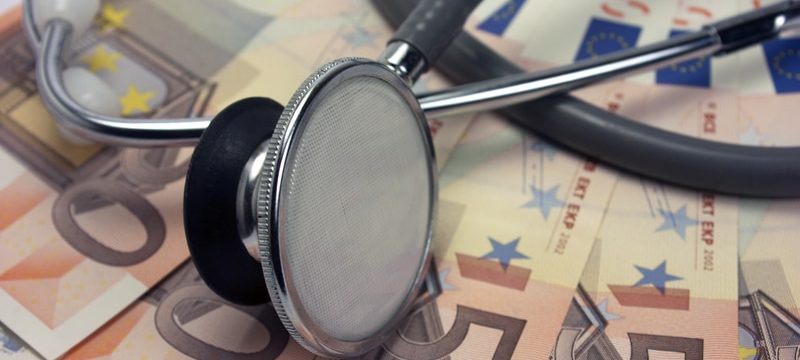Private health and welfare costs are continuing to rise, with social inequality increasing alongside them. This is the worrying statistic confirmed at recent talks made by several experts from the Italian National Institute of Statistics (ISTAT) and held by the Italian Senate’s Social Affairs’ Committee.
Cristina Freguja, from ISTAT’s centralized Department of Social Statistics and Welfare, highlights that private expenditure is not equitably distributed across the board, but instead falls mainly to the lowest income brackets. In this already unbalanced scenario, private insurance is almost exclusively the domain of the highest income bracket, whose members avail themselves of private healthcare through their employer; low-income workers don’t receive such perks.
The Many Areas of Spending for Families
In her report, which uses the most up-to-date data available at the time of publishing, Freguja explains that in 2021, overall expenditure on both public and private healthcare came to around 168 billion euros: three quarters was borne by the public (75.6%), 21.8% was directly payable by families and 2.7% was supported by voluntary funding regimens.
Between 2012 and 2021, public expenditure on healthcare grew at an average rate of 1.8% per year. This jumped significantly during the pandemic, reaching 121 and 127 billion euros in 2020 and 2021, respectively.
Direct family expenditure also saw an increase during the 2012-2021 period, with spending increased by an average of 1.7% per year, which translates as 36.5 billion euros in 2021.
The main areas of spending for families relate to outpatient care for treatment and recovery (36.5%), purchasing pharmaceutical products and other single-use medical devices (29.3%), long-term inpatient (health) care and purchasing therapeutic appliances and other multiple-use medical devices (the latter two combined add up to a 10.4% rate).
In 2021, spending on voluntary funded regimens reached 4.5 billion euros, including 3.4 for voluntary healthcare insurance, with an annual average increase of 2.9%. Nearly two thirds of spending (62.3%) covers outpatient care for treatment and recovery and 17.9% goes towards expenditure on therapeutic appliances and other multiple-use medical devices.
In 2021, 38% of overall spending on long-term inpatient healthcare was borne by families. It should also be noted that the latter accounts for 76.7% of therapeutic appliance and other multiple-use medical device purchasing, as well as for 36.4% of overall spending on pharmaceutical products and other single-use medical devices.
This increase in spending for families was accompanied by a decline in much-needed healthcare services, which went from 6.3% in 2019 to 9.6% in 2020, and up to 11.1% in 2021, explains Freguja. She estimates a reversal of this trend in 2022 and a return to the levels seen in the years prior to the pandemic, even though an unmistakable barrier to access such services has appeared, one that wasn’t there before: long waiting lists for treatment.
Private Sector Competing with The Public One
When basic care healthcare reform required every Italian region, regardless of its independence status, to ensure that all citizens would receive a set number of services deemed essential for health, it was already clear that some services would need to be covered by supplementary funding (to be created shortly thereafter), added Alessandro Solipaca, from ISTAT’s Disability and Social Integration Department. But this didn’t happen, and the expected funds never materialized. Above all, they didn’t operate in the spirit of the law (ie, by covering non-essential health services).
And whereas public spending on healthcare has grown slowly over the years, private expenditure has grown more rapidly, with regions burdened by increasingly large deficits that have increased patient contribution fees requested from taxpayers — in many cases amounting to the same price of treatment in a private facility.
This has also increased private spending, with a noticeable trend emerging. To counter it, pension funds would need to be raised to control private spending. According to Solipaca, supplementary insurance funds could promote the emergence of services that are currently provided illegally and could combat unregulated services, two goals that were among the priorities of the reform when it was introduced by former Italian Health Minister Rosy Bindi.
The committee’s chairman, Francesco Zaffini, commented: “Nowadays, private expenditure is unmediated. It doesn’t meet benchmarks for reliability and fairness.” Zaffini, from the Fratelli d’Italia (“Brothers of Italy”) party, announced his intention to propose a reshuffling of the supplementary welfare and healthcare programs as part of the overall efficacy of the welfare and healthcare provision.
“On one side we have the National Health Fund, which is now valued at around 127 billion euros, for which the State obviously acts as an intermediary in providing healthcare services. On the other, we have private expenditure, which is now worth around 40-45 billion euros. Some say this figure is even higher. This is not possible and does not meet the benchmarks of other EU countries. Above all, it does not meet the benchmarks of reliability and fairness. Supplementary health insurance must not compete with public health. At the same time, it must provide important services, as it does in the dental sector, for example.”
This article was translated from Univadis Italy, part of the Medscape Professional Network.
For more news, follow Medscape on Facebook, Twitter, Instagram, YouTube, and LinkedIn
Source: Read Full Article
